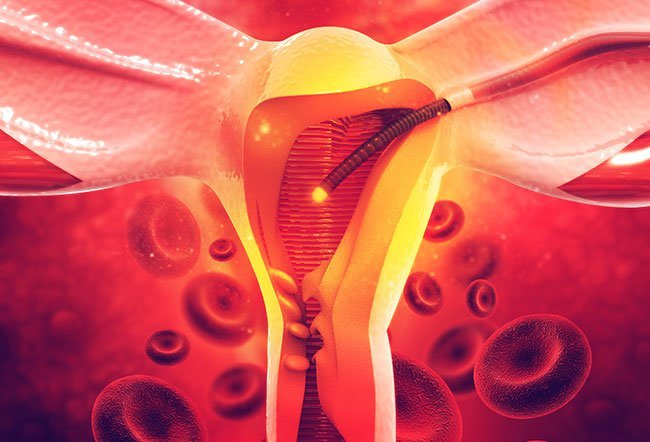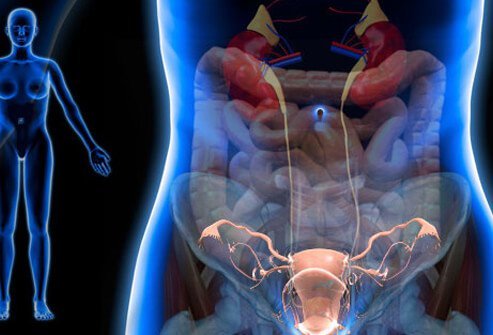
Uterine fibroid growth depends on various factors, such as fibroid size, number, and the age at which you are diagnosed
If you have fibroids, you may be concerned about how fast they grow. Uterine fibroid growth depends on various factors, such as fibroid size, number, and the age at which you are diagnosed.
Previously, it was believed that fibroids grow in a linear pattern, starting during puberty and continuing until menopausal hormonal changes, when they should ideally shrink. However, current evidence suggests that fibroids grow at different rates and their rate of growth ranges from as low as 18% to as high as 120% a year.
What causes fibroids to grow rapidly?
Studies investigating factors that affect fibroid growth have produced conflicting results. There is no agreement as to whether smaller or larger fibroids grow faster. Some studies, however, suggest that very small fibroids grow faster than larger ones.
A type of fibroids called submucous fibroids is the least likely to increase in size, and reduced growth rates have been reported with increasing age.
Fibroids have been seen to grow quickly in the first half of pregnancy, especially in the first trimester. However, recent studies suggest fibroids do not grow or shrink as pregnancy advances to the second or third trimester.
If you have fibroids but do not experience uncomfortable symptoms, your doctor may ask you to come in for regular pelvic ultrasounds to monitor the size of the fibroids and rate of growth.
What are risk factors for fibroids?
While the exact cause of fibroids is unknown, the condition seems to be affected by levels of the female hormones estrogen and progesterone. Factors that may increase the risk of developing fibroids include:
- Age at first menstruation (early age at onset of menstruation increases the risk)
- Heredity (having a sister or mother with fibroids increases the risk)
- Lifestyle (high intake of processed foods, low intake of fruits and vegetables, obesity, and alcohol consumption may increase the risk)
- Number of pregnancies (the risk of uterine fibroids decreases with each full-term pregnancy)
Fibroids can still develop even if no risk factors are present.
What are symptoms of fibroids?
Most fibroids are small and do not cause symptoms. However, when there are many fibroids or the fibroids are large in size, they may cause symptoms such as:
- Heavy or long menstrual periods
- Pelvic pressure and pain
- Problems with fertility and pregnancy
How are fibroids diagnosed?
Your doctor may ask you about your signs and symptoms and perform a physical examination, including an examination of the abdomen and pelvis to look for growths.
If your uterus is enlarged or has an irregular shape, your doctor may suspect fibroids and will order a pelvic ultrasound to confirm a diagnosis.
How are fibroids treated?
Not every woman needs treatment for fibroids. Treatment is usually only necessary if there are symptoms. Factors that help determine the type of treatment needed include:
- Symptoms
- Size of the fibroids
- Number of the fibroids
- Location of the fibroids
- Whether you want to get pregnant in the future

SLIDESHOW
Pelvic Pain: What’s Causing Your Pelvic Pain? See Slideshow
What medications are used to treat fibroids?
- Iron and vitamins: To correct iron-deficiency anemia caused by heavy or prolonged bleeding.
- Nonsteroidal anti-inflammatory drugs (NSAIDs): Ibuprofen and naproxen to relieve pain.
- Hormonal birth control: Involves administering synthetic forms of female hormones to reduce bleeding, cramps, and pain during menstrual periods and correct anemia. It may take 3 months for bleeding to improve. Options for hormonal birth control include:
- Pills
- Skin patches
- Vaginal rings
- Shots of depot medroxyprogesterone acetate
- Hormonal intrauterine devices or IUDs (these are placed inside the uterus and best only if you do not plan to become pregnant within the next 6-12 months)
- Implants (these are inserted under the skin of the upper inner arm and are about the size of a matchstick)
- Antifibrinolytic medications: Tranexamic acid to lower blood loss.
- Gonadotropin-releasing hormone analogs: To temporarily stop the production of estrogen and progesterone and reduce heavy menstrual bleeding.
What surgeries can treat fibroids?
- Myomectomy: Surgical removal of fibroids, often a good choice for people who may want to get pregnant in the future:
- Abdominal myomectomy (performed by making an incision in the lower abdomen to remove the fibroids)
- Laparoscopic or robotic myomectomy (involves several small incisions in the stomach and using laparoscopy to remove the fibroids)
- Hysteroscopic myomectomy (involves removing fibroids by inserting instruments through the cervix)
- Uterine artery embolization: Blocks the blood supply to the fibroids, which causes them to shrink within weeks to several months
- Magnetic resonance-guided focused ultrasound: Involves thermal destruction of the fibroid magnetic resonance imaging guidance
- Ultrasound-guided radiofrequency ablation: Involves destroying the fibroids under ultrasound guidance
- Endometrial ablation: Involves destroying the lining of the uterus
- Hysterectomy: Surgical removal of the uterus
Latest Women’s Health News
Daily Health News
Trending on MedicineNet
Medically Reviewed on 4/20/2022
References
Ghosh S, Naftalin J, Imrie R, Hoo WL. Natural History of Uterine Fibroids: A Radiological Perspective. Curr Obstet Gynecol Rep. 2018;7(3):117-121. https://pubmed.ncbi.nlm.nih.gov/30101039/
Nutan F. Leiomyoma. Medscape. https://emedicine.medscape.com/article/1057733-overview
Stewart EA, Laughlin-Tommaso SK. Uterine fibroids (leiomyomas): Epidemiology, clinical features, diagnosis, and natural history. UpToDate. https://www.uptodate.com/contents/uterine-fibroids-leiomyomas-epidemiology-clinical-features-diagnosis-and-natural-history
Stewart EA. Uterine fibroids (leiomyomas): Treatment overview. UpToDate. https://www.uptodate.com/contents/uterine-fibroids-leiomyomas-treatment-overview